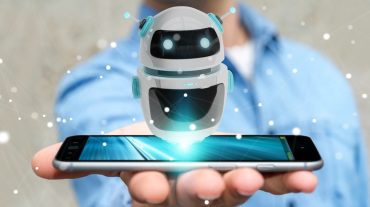
Generative AI is giving developers more ways to impart human-like qualities and more functionality into modern robots.
Robots with human characteristics have been appearing on the scene for several years now, going back to the department store greeter introduced several years ago, capable of answering shoppers’ basic questions, NASA’s Robonaut, which works side by side with International Space Station tenants, and Honda’s ASIMO, which could communicate on a basic level, climb stairs, and kick balls around.
But they still come across as mechanical and programmatic, and can’t venture too far out of their lanes. They needed constant reprogramming. In the case of ASIMO, the robot was retired so Honda could focus on more “practical” robotics.
We’re not quite there with developing a C-3PO, who can interact, even with a sense of humor, on any level in any location, in any situation. Or are we?
Researchers are now developing human-like robots that can respond to any or all situations put in front of them. “The field of robotics stands at a pivotal point, poised to venture beyond the controlled confines of factories and laboratories,” says Frank Diana, futurist with TCS. “At the forefront of this progress lies the potent collaboration between generative AI and humanoid robots, paving the way for their operation in the dynamic and unpredictable world – unstructured environments.”
Generative AI now provides robots with the ability to perceive, interpret, and adapt to “unstructured” situations, such as changes in layout, object placement, and lighting conditions, Diana continues.
Money is flowing in that direction as well, Diana continues, pointing to a recent announcement that Figure AI, a small robotics startup in Silicon Valley “reportedly raised $675 million in a new funding round led by Jeff Bezos’ venture firm Explore Investments, which committed $100 million. Microsoft, Amazon and Nvidia added nearly $299 million between them and both OpenAI and Intel committed smaller amounts.”
See also: Robots Designed for Space Could Serve on Earth, Too
In addition, Bessemer Venture Partners just announced an emphasis on investing in autonomous robots (boosted by AI) that can learn, act, and help humans autonomously. “Autonomous robotics is still a niche field, but we believe that its emergence will expand the entire robotics market in the coming years as it enables higher-value use cases,” according to a statement from the firm.
“With technological maturity in cameras, computer vision, and deep learning, we get a robot that can perceive, understand, and learn from its environment; a robot that’s autonomous,” according to Bessemer “Generative AI removes the friction for human-robot interactions, making communication as easy as speaking to a colleague or friend.”
Still, experts in the field question whether AI can still deliver human-like responsiveness, as they still have significant limitations. Large language models “do not possess the ability to perform accurately in situations not encountered in their training,” according to Melanie Mitchell of the Santa Fe Institute, quoted in ScienceNews. “And therefore, they do not exhibit what humans would regard as ‘understanding’ of the world.”



























